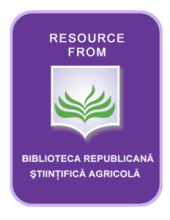/ library resources
Showing items 1 through 9 of 31.Agriculture is one of the driving forces that shaped the image of Republic of
This article presents a synthesis of analysis of how to use the most valuable natural
Globally, farmland abandonment has been a major phenomenon for eco-environmental and social landscape changes in the mountain regions.
Cotton production substantially contributes to the GDP of Uzbekistan. It is produced under a state procurement policy, according to which farmers have to allocate half of their land for cotton, fulfill cotton output levels and sell the entire harvest of cotton to the state.
As the applications of Earth system models (ESMs) move from general climate projections toward questions of mitigation and adaptation, the inclusion of land management practices in these models becomes crucial.
As the applications of Earth system models (ESMs) move from general climate projections toward questions of mitigation and adaptation, the inclusion of land management practices in these models becomes crucial.
In January 2019, Uzbekistan started a new farm restructuring1. It is said to seek to optimize the use of farmland by increasing the size of farms producing wheat and cotton, reallocating land to more efficient farmers and even clusters, and improving crop rotation options.
In economics, land has been traditionally assumed to be a fixed production factor, both in terms of quantity supplied and mobility, as opposed to capital and labor, which are usually considered to be mobile factors, at least to some extent.
The current state of agricultural production space is the outcome of centuries of human activity, as conditioned by socio-economic, legal, and political factors.
Paginação
Land Library Search
Through our robust search engine, you can search for any item of the over 73,000 highly curated resources in the Land Library.
If you would like to find an overview of what is possible, feel free to peruse the Search Guide.







